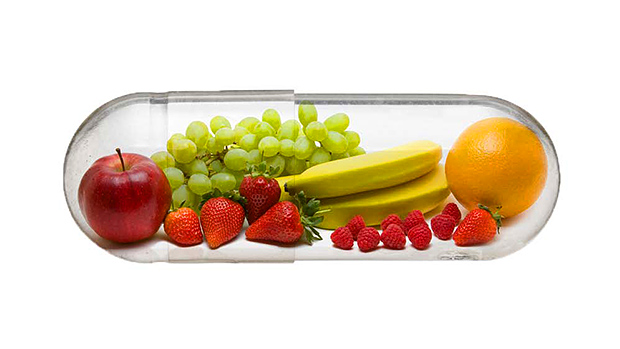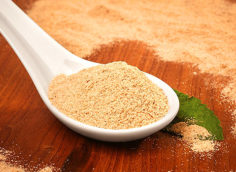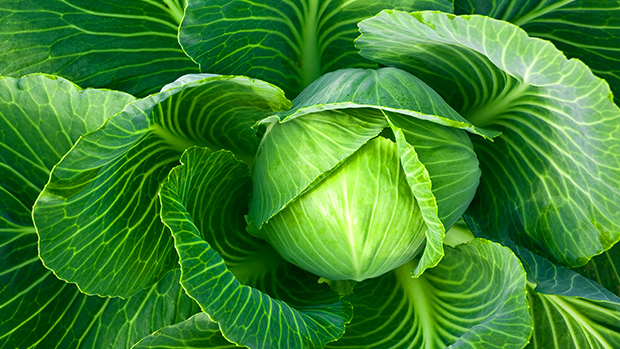Der Fartenfuhrer
Most of us were doing just fine and fulfilling the recommendations of the World Health Organization (WHO) by eating 3 or 4 servings of fruits and vegetables a day (400 grams). Doing so, we were told, was associated with a significantly reduced risk of cardiovascular disease, cancer, and premature death.
Swell. No sweat. Bring on the garbanzo beans. Then they threw us a Wiffle ball curve.
A few years ago, The Imperial College of London told us to forget about that 3 or 4 servings thing and raise our daily consumption of fruits and vegetables to 10 servings a day (800 grams). We tried, God we tried, but boy were we gassy.
It got so bad for a few of us that we actually started to manifest signs of meteorism, which is when your stomach gets inflated like the Wonder Dog balloon at the Macy's Thanksgiving Day parade. It's also what Hitler suffered from, earning him the name "Der Fartenfuhrer" from some glib historians.
But now, thank goodness, they're back to telling us that a few servings – a measly 375 grams a day – is plenty to reduce the risk of illnesses and death in general.
An international team of researchers spent 2003 to 2013 recruiting 135,000 participants between the ages of 35 and 70 from 18 different countries. Participants were routinely quizzed on their frequency of eating various foods so researchers could ascertain their fruit and vegetable intake. Fruit juices and potatoes (and other tubers) were excluded from their analyses.
The researchers took into consideration their sex, education, smoking status, and physical activity. They followed the participants for between 5.3 and 9.3 years, while checking specific health parameters every 3 years.
Eating a combination of fruits, vegetables, and legumes lowered the risk of dying from cardiovascular disease or cancer, as well as the overall risk of death.
None of that is new, but they found the greatest impact for people who ate between 375 and 500 grams a day, with an overall reduction in risk of death of 22%, compared to those who ate less than 125 grams a day. Eating more than 400 to 500 grams a day didn't confer any additional health gains.
;
If this study is to be believed, and there's no apparent reason it shouldn't, most of us can stop stressing about whether or not we've hit our slightly impractical fruit and vegetable target each day. Rather than eating 800 grams, as we were told to do just a few years ago, we can now do just as well with 375.
However, bear in mind that not all fruits and vegetables are nutritionally equivalent. For instance, research indicates that apples, pears, citrus fruits, salads, and green leafy vegetables such as spinach and lettuce (Romaine), along with cruciferous vegetables like broccoli, cabbage, cauliflower, and Brussels sprouts have been found to be best at preventing heart disease.
Likewise, the risk of getting cancer can best be reduced by eating a combination of green, yellow, and orange vegetables like green beans, peppers, and carrots, along with the aforementioned cruciferous vegetables.
And as far as a difference between cooked and raw fruits and vegetables, none were detected (although an Australian study from 2016 reported that the nutrients in cooked vegetables are more easily assimilated).
The definition of the term "serving" differs between the WHO and the U.S. According to the WHO, a serving is 80 grams, while in the U.S. it's 125 grams.
So by the U.S. definition, it takes just three servings – 375 grams – to achieve the health benefits described in this study. To better help you gauge your input, here are some examples of typical servings of fruits or vegetables:
- 1 small apple: 1 serving
- 1 banana: 1 serving
- 1 small bell pepper: half serving
- Half cup berries and grapes: 1 serving
- Half cup broccoli: serving
- Half cup cooked squash: serving
- 1 cup leafy greens: 1 serving
- 1 large orange: 1 serving
- Half cup raw fruits or vegetables, chopped: 1 serving
Of course, getting even 3 or 4 servings can sometimes be difficult. Add some Superfood to your cereal, protein shake, meat sauce, or soup each day to help meet your fruit and vegetable quota. Each little scoop contains the freeze-dried extracts of 18 different whole fruits, berries, and vegetables.
- Miller, Victoria, et al. "Fruit, vegetable, and legume intake, and cardiovascular disease and deaths in 18 countries (PURE): a prospective cohort study." The Lancet, 29 August, 2017.





